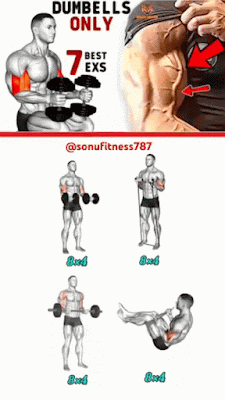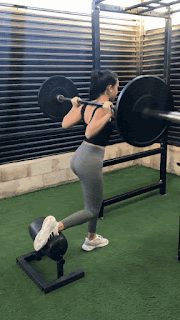8 Effective Dumbbell Workouts for Full-Body Fitness
Dumbbells are versatile, easy-to-use pieces of equipment that can help you achieve a comprehensive workout right at home or at the gym. Whether you’re aiming to build strength, increase muscle mass, or improve your overall fitness, incorporating dumbbells into your routine is a great way to achieve these goals. Here are eight effective dumbbell workouts designed to target different muscle groups and improve overall fitness.
1. Dumbbell Squats
Muscles Worked:
- Quadriceps
- Hamstrings
- Glutes
- Core
Instructions:
1. Stand with your feet shoulder-width apart, holding a dumbbell in each hand at your sides.
2. Keep your back straight and core engaged as you lower your body into a squat position by bending your knees and pushing your hips back.
3. Ensure your knees do not go past your toes.
4. Push through your heels to return to the starting position.
Reps and Sets:
- 3 sets of 12-15 reps
2. Dumbbell Bench Press
Muscles Worked:
- Chest
- Shoulders
- Triceps
Instructions:
1. Lie on a bench with your feet flat on the floor, holding a dumbbell in each hand at chest level.
2. Press the dumbbells upward until your arms are fully extended.
3. Lower the dumbbells back to chest level with control.
Reps and Sets:
- 3 sets of 10-12 reps
3. Dumbbell Deadlifts
Muscles Worked:
- Lower back
- Hamstrings
- Glutes
- Core
Instructions:
1. Stand with your feet hip-width apart, holding a dumbbell in each hand in front of your thighs.
2. Keep your back straight and knees slightly bent as you hinge at the hips to lower the dumbbells toward the floor.
3. Engage your glutes and hamstrings to return to the starting position.
Reps and Sets:
- 3 sets of 10-12 reps
4. Dumbbell Shoulder Press
Muscles Worked:
- Shoulders
- Triceps
- Upper chest
Instructions:
1. Stand or sit with a dumbbell in each hand at shoulder height, palms facing forward.
2. Press the dumbbells overhead until your arms are fully extended.
3. Lower the dumbbells back to shoulder height with control.
Reps and Sets:
- 3 sets of 10-12 reps
5. Dumbbell Bent-Over Rows
Muscles Worked:
- Upper back
- Lats
- Biceps
- Core
Instructions:
1. Stand with your feet hip-width apart, holding a dumbbell in each hand, palms facing each other.
2. Bend your knees slightly and hinge forward at the hips, keeping your back straight.
3. Pull the dumbbells toward your torso, squeezing your shoulder blades together.
4. Lower the dumbbells back to the starting position.
Reps and Sets:
- 3 sets of 12-15 reps
6. Dumbbell Lunges
Muscles Worked:
- Quadriceps
- Hamstrings
- Glutes
- Core
Instructions:
1. Stand with your feet together, holding a dumbbell in each hand at your sides.
2. Step forward with one leg and lower your body until both knees are bent at a 90-degree angle.
3. Push through the front heel to return to the starting position.
4. Repeat on the other leg.
Reps and Sets:
- 3 sets of 10-12 reps per leg
7. Dumbbell Bicep Curls
Muscles Worked:
- Biceps
Instructions:
1. Stand with your feet shoulder-width apart, holding a dumbbell in each hand, palms facing forward.
2. Curl the dumbbells up toward your shoulders, keeping your elbows close to your body.
3. Lower the dumbbells back to the starting position with control.
Reps and Sets:
- 3 sets of 12-15 reps
8. Dumbbell Tricep Extensions
Muscles Worked:
- Triceps
Instructions:
1. Stand or sit with your feet shoulder-width apart, holding one dumbbell with both hands behind your head.
2. Extend your arms to lift the dumbbell overhead, keeping your elbows close to your head.
3. Lower the dumbbell back behind your head with control.
Reps and Sets:
- 3 sets of 10-12 reps
Incorporating these eight dumbbell workouts into your fitness routine can help you build strength, increase muscle mass, and improve your overall fitness. Remember to use proper form to prevent injury and maximize the effectiveness of each exercise. Adjust the weight of the dumbbells according to your fitness level and progressively increase the resistance as you get stronger. Stay consistent, and you’ll see significant improvements in your strength and physique.




.gif)

.gif)


.gif)

